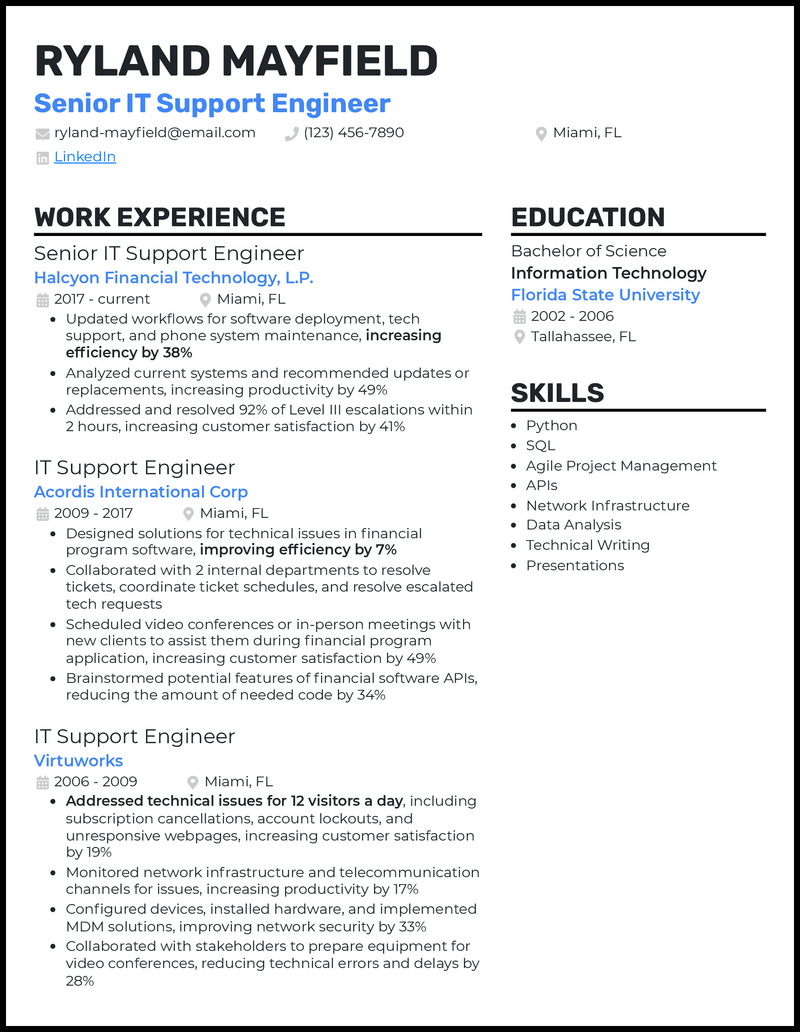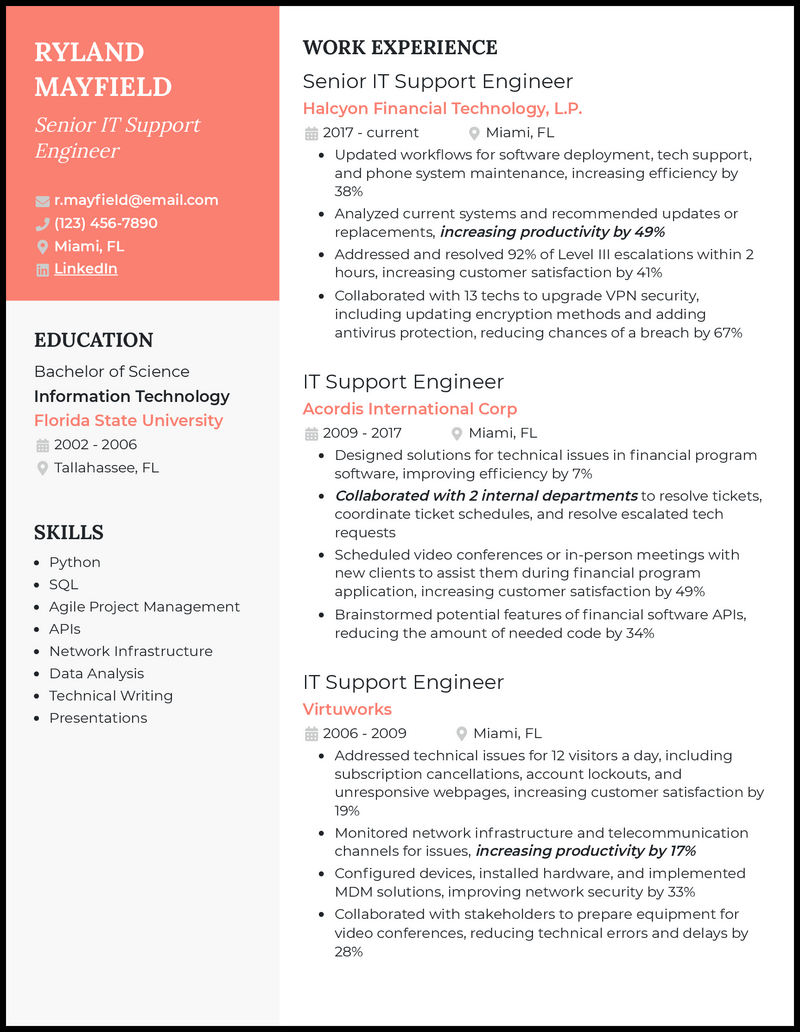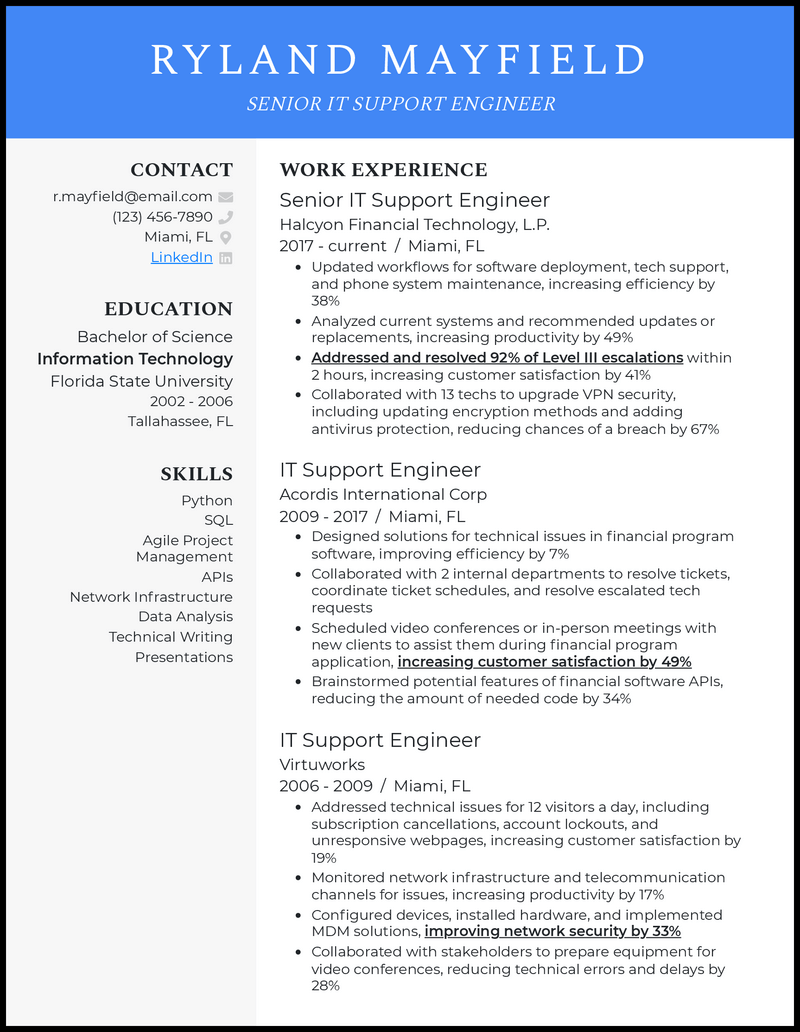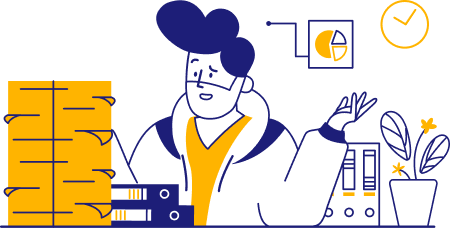

The importance of your role as an IT professional cannot be overstated. Companies cant even operate properly without you and your team ensuring the optimal functionality and security of their computer systems.
Your strong analytical and problem-solving skills took thousands of hours to develop and they are not easy to condense down into a bullet point or two, so crafting a resume might be challenging.
Luckily, effective resumes aren’t really about simply listing your skills. With our cover letter writing tips, tricks, and IT professional resume examples, you can write a resume that perfectly communicates everything you’re capable of.




As an IT professional, the number of programming languages, tools, and software you’re familiar with will far exceed the space available on your resume. You’ll have to be selective, so it’s important to make sure you cover all the bases.
Begin by showcasing your proficiency in programming languages, network administration, and database management, taking care to mirror any specific tools or technologies mentioned in the job description.
You can also include your knowledge of cloud computing platforms, cybersecurity, and IT infrastructure management. Most of your skills should be technical—talk about your people skills during the interview instead.
In your work experience section, focus on showcasing your achievements and impact through the results of your contributions. This could be anything from deploying new software, streamlining processes, optimizing databases, or bolstering security.
Make sure you use the job description to guide your choices, so you can showcase achievements that are relevant to the role you’re applying for. Highlight not only your technical expertise but also your excellent teamwork and communication skills by mentioning initiatives you’ve led or cross-functional teams you’ve participated in.
Once everything you have is relevant and focused, you need to make it stand out. The best way to do this as an IT professional is to fill the entire section with facts, figures, and metrics that validate your claims and convey how impressive they are.
Here are some examples to show you what we mean:
Your most recent experience is always the most relevant, so choose your top three most recent roles for the work experience section. If you’re still new to the industry, you can also draw on your educational experience and personal IT projects.
Can I include freelance or contract IT projects on my resume?Yes, and you can format them just the same as a full-time role. All you need to do is include information about the freelance nature of the project and its duration in the header, so that it’s clear to anyone who reads it.
Should I include a career summary?Yes, career summaries are a great way to introduce your resume. They can’t take up too much space, so it’s important to be concise—mention your years of experience, a stand-out achievement, and tell the company what you want to achieve while working with them.